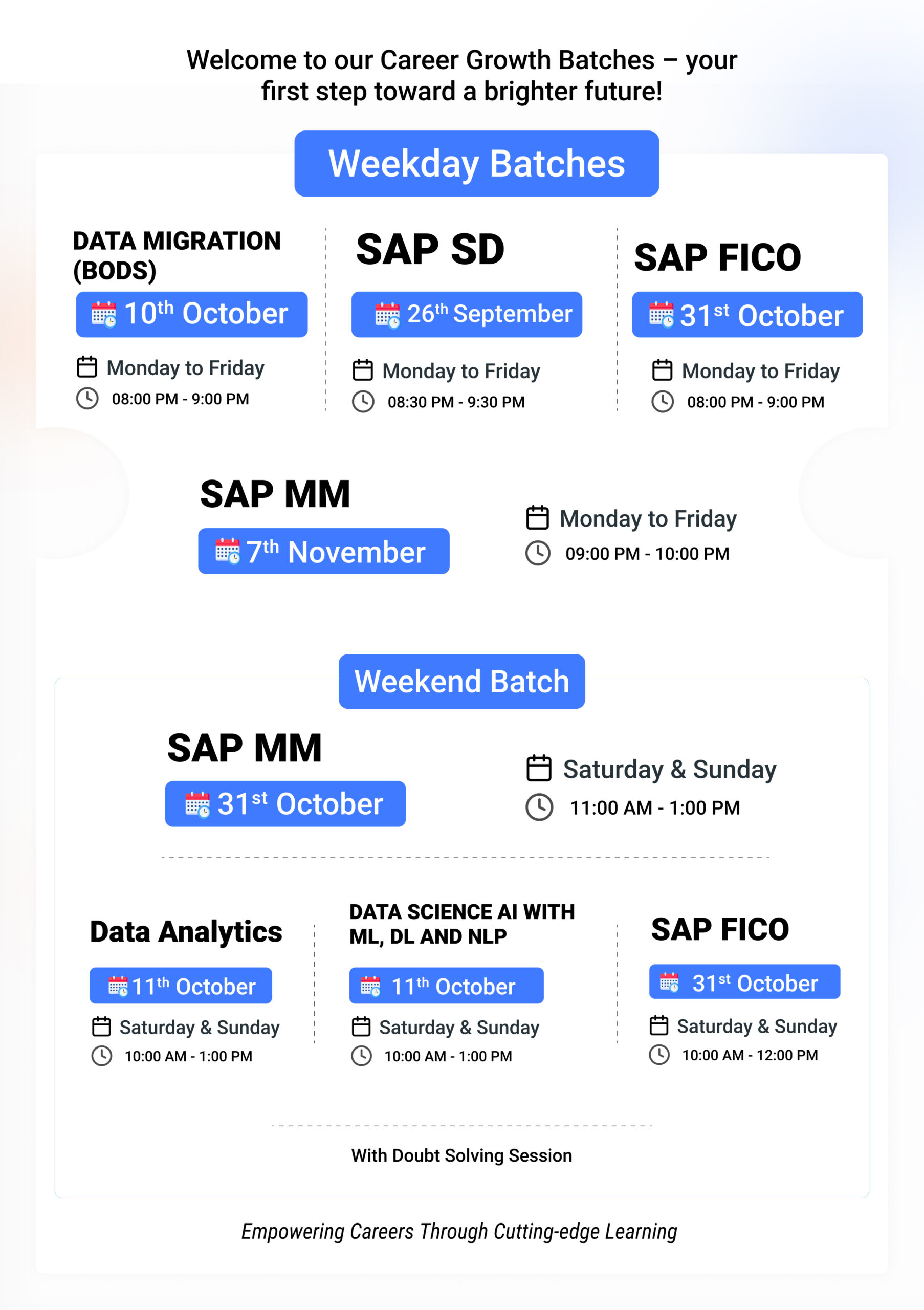Complete Subcontracting Process in SAP MM with T-Codes1
The subcontracting process in SAP MM is essential for businesses that outsource specific production operations to external vendors. Whether you’re a beginner or an advanced SAP consultant, understanding this process and the associated T-codes is vital for effective procurement planning and execution.
This blog post explains the complete subcontracting process using a structured approach—Basic, Intermediate, and Advanced questions—along with clear answers and transaction codes. The goal is to help you confidently handle subcontracting scenarios in SAP MM, from setup to settlement.

What is Subcontracting in SAP MM?
Subcontracting is a procurement process where a company provides raw materials or components to a vendor (subcontractor) who then performs specific operations and returns the finished product. In SAP, subcontracting is managed through special procurement type and associated with unique item categories.
Basic-Level Questions on Subcontracting Process in SAP MM
1. What is the purpose of subcontracting in SAP MM?
Subcontracting helps organizations:
-
Outsource specific production activities (e.g., painting, assembly).
-
Reduce internal workload and manufacturing costs.
-
Improve flexibility in operations.
2. What master data is required for subcontracting?
To perform subcontracting, the following master data is needed:
-
Vendor Master (T-code: XK01/XK02)
-
Material Master (T-code: MM01/MM02)
-
Include BOM (Bill of Materials)
-
-
Bill of Materials (T-code: CS01)
-
Contains components to be provided to the subcontractor
-
-
Purchasing Info Record (T-code: ME11) (Optional)
3. Which T-code is used to create a subcontracting purchase order?
Use ME21N to create a purchase order.
-
Item Category: L (Subcontracting)
-
Provide component materials via BOM or itemization
4. What happens after a subcontracting PO is created?
After the PO is created:
-
Raw materials are sent to the subcontractor using a transfer posting (T-code: MB1B or MIGO with movement type 541).
-
The vendor performs the agreed operation and delivers the final product.
5. How are goods received in subcontracting?
When the finished material is received from the vendor:
-
Use MIGO for Goods Receipt against PO (Movement Type 101).
-
System automatically consumes the component stock.
6. Which movement type is used to issue components to the subcontractor?
Movement Type 541 is used to transfer materials to subcontracting stock.
Intermediate-Level Questions on Subcontracting Process in SAP MM
7. How does SAP consume components during goods receipt?
During the Goods Receipt (GR):
-
SAP checks the BOM and automatically posts a Goods Issue (Movement Type 543) for the components provided earlier.
-
This reduces subcontracting stock and updates material consumption.
8. How is subcontracting stock monitored?
Use T-code MB58 to check stock provided to vendors.
Alternatively, MB5T shows a list of subcontracting stocks with vendor references.
9. How are subcontracting charges calculated?
Charges are calculated based on:
-
Subcontracting PO item price
-
Taxes, freight, discounts via Pricing Procedure
-
Use ME23N to view pricing conditions
10. How are subcontracting invoices verified?
Use MIRO for invoice verification:
-
The system picks up only the subcontracting service value (not component costs).
-
Use PO Reference and check taxes, freight.
11. What are the accounting entries during subcontracting?
At component issue (541):
-
No financial posting; only stock reclassification
At goods receipt (101):
-
Dr: Inventory of finished product
-
Cr: GR/IR Clearing Account
-
Dr: Consumption of components (via 543)
At invoice verification:
-
Dr: GR/IR
-
Cr: Vendor Account
12. How to view subcontracting history?
Use:
-
ME2O – POs with subcontracting
-
MB51 – Movement history (Filter by movement type 541, 543)
Advanced-Level Questions on Subcontracting Process in SAP MM
13. How do you handle by-products in subcontracting?
If the subcontractor returns by-products:
-
Maintain BOM with negative quantity
-
System includes the by-product in the goods receipt posting
-
Manually adjust accounting if needed
14. Can we automate component provision during PO creation?
Yes. By maintaining:
-
BOM for the material
-
System auto-populates components when you create the PO (ME21N)
Use Item Category L and set Components Tab active in PO item details.
15. What if the vendor returns excess components?
Use movement type 542 via MIGO to return the excess stock from subcontractor location to plant stock.
16. How does batch management work in subcontracting?
For batch-managed materials:
-
Batch numbers must be specified during 541 (transfer posting)
-
Tracked throughout the process using MSC3N, MB56
17. Can we perform subcontracting with split valuation?
Yes, but configuration is required:
-
Components and finished materials must support valuation type
-
Ensure valuation types are assigned in MM01
18. What are the challenges in real-world subcontracting?
-
Tracking unplanned component returns
-
Managing vendor stock mismatches
-
Invoice mismatches due to incorrect PO pricing
-
Incorrect BOM consumption
Summary of Key T-Codes in Subcontracting Process
| Activity | T-Code | Description |
|---|---|---|
| Create Vendor | XK01 | Vendor Master Setup |
| Create Material | MM01 | Material Master Setup |
| Create BOM | CS01 | Bill of Materials for Subcontracting |
| Create Subcontracting PO | ME21N | PO with Item Category L |
| Transfer Posting to Vendor | MIGO/MB1B | 541 Movement Type |
| Goods Receipt from Vendor | MIGO | 101 + 543 Movement Types |
| Invoice Verification | MIRO | Against PO |
| Monitor Subcontracting Stock | MB58/MB5T | Stock with Vendor |
| Display PO | ME23N | View PO details and pricing |
| View PO History | ME2O | Subcontracting-specific PO List |
| Movement History | MB51 | Track 541/543/101 movement types |
Read More Now: Master SAP S/4HANA MM Sourcing & Procurement | Real-Time Training with Certification
Conclusion
The subcontracting process in SAP MM is a robust feature that allows companies to collaborate effectively with external vendors while maintaining control over material flow and financial transparency. From creating the right master data to managing components and invoices, understanding this process is key to a smooth procurement lifecycle.
Whether you’re configuring the BOM or troubleshooting PO pricing, knowing the correct T-codes and flow will ensure your subcontracting scenarios run efficiently and without error.







